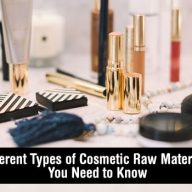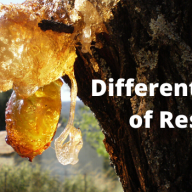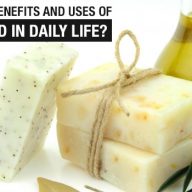What are the Different Types of Resins?
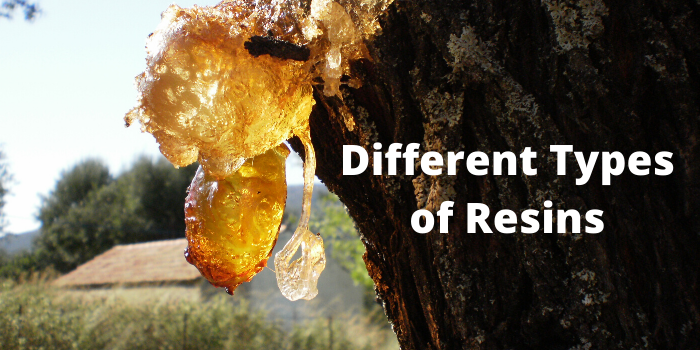
Resins are chemical compounds having molecular weight more than 300. It is possible to classify natural resins as spirit-soluble and oil-soluble. Oil-soluble resins include rosin, extracted from long-leaf pine turpentine and used in a wide range of applications, including soap making; the toughest natural resin produced in jewellery; Copals used in varnishes; amber; oriental lacquer, derived from a tree native to China; and cashew-nutshell oil, derived from cashew nuts.
Resins have many sources and end uses. Sources can range from natural and synthetic. Resins can derived from polymers, monomers, oils, fatty acids and natural sources.
Perhaps, resins have the widest application areas. From paints and coatings, Personal Care & Home Care, pharma, rubber, plastics and it’s coatings, making electrical and jewelry articles, decorative items, wood coatings etc.
Natural resins have been replaced almost entirely in modern industry by synthetic resins that are divided into two classes, thermoplastic resins that remain plastic after heat treatment, and heat-setting resins that become insoluble and heat-infusible.
Types of Resins
1. Thermoplastic Resins
A substance that softens when heated and when cooled, it hardens again. Thermoplastic product. Product-generic term for certain synthetic or semi-synthetic materials which can be formed or extruded into objects or films or filaments or used for the manufacture of coatings and adhesives. TPA resin, as it is commonly called, comes in liquid form as well as in the form of requires. These are used in plastic coatings as well as in aerosols.
Eg:
- Polyethylene
- Polypropylene
- Polyvinyl chloride
- Chlorinated rubber
So, let us get into the details of some of the Thermoplastic resins
- Alkyd Resins – These are made by heating polyhydric alcohol with polybasic acids. They possess great electrical and thermal properties along with it a good chemical resistance. Quite cost effective and used for electric components, paints and putty filers.
- Polycarbonate Resins – These are generally made from bisphenol A and phosgene. With a high refractive index, resistance to staining and filtration and electrical and thermal dimensional stability. Due to their inherent advantages, they are used for metal replacements, lenses, safety helmets, insulators and photography film.
- Polypropylene Resins – These are a type of thermoplastic polymer resin that doesn’t contain BPA. They are colorless, tasteless with a great heat resistance and low density. They also possess a great chemical resistance and are used for toys, pipe and production and coatings.
2. Thermosetting Resins
Thermoplastics and thermoplastic resins are raw, unformed polymers that, when heated, transform into liquid and when chilled, become solid. These can be re-molded and remolded twice, allowing reprocessing of pieces and scraps. TSA, as generally acknowledged as, is used in combination with a melamine resin as baking enamels. In industrial coatings, automotive and two-wheelers, e-rickshaw coatings, brass coatings, etc. are common applications.
Eg:
- Urea
- Formaldehyde resins
- Melamine
- Formaldehyde
- Resins, Phenolic
- Resins (Resol Type)
Let’s explore some of the Thermosetting Resins in details.
- Phenolic Resins – They are one of the types of thermosetting resins and possess a strong heat and impact resistance to chemical corrosion and moisture penetration. They are used for a variety of products like brake linings, electrical components, molds, adhesive for cements etc.
- Polyester Resins – They are formed by the reaction of polyhydric alcohols and dibasic organic acids. The best thing about it is they have quite an excellent resistance to heat and chemicals. They are quite cost effective and are extensively used for construction, fishing rods, decorative accessories, coatings and in plane and ship components.
- Epoxy Resins – They are a type of reactive prepolymers and polymers belonging to the epoxide group. They have an excellent chemical and heat resistance and great adhesive properties. Used extensively in laminates, linings, propellers and surface coatings.
Methods of Preparation/Polymerization
1. Condensation Polymerisation
(Polyesters, Polyamides, Polyurethanes, Epoxies, Silicons)
A polymerization of condensation is a form of polymerization of step-growth. Small molecules, while releasing smaller molecules as a-product such as water or methanol, react with one another to form larger structural units. Get some details on the uses of stearic acid.
2. Addition Polymerisation
(Polyethylene, Polypropylene, Polyvinyl chloride, Acrylics)
The additional polymer is a polymer that forms without the co-generation of other materials by simply linking monomers. Additional polymerization varies from condensation polymerization, which usually causes water to co-generate a substance.
Advantages of Resins
- They can be easily dyed, colored and mixed with metal powders or fluorescent pigments
- They have great precision
- There is a large variety of resin available with different properties.
- They have a great variety of applications
- They possess a great water resistance
- They have high thermal and mechanical properties
- They have a very high environmental and chemical resistance.
Application Segments of Resins
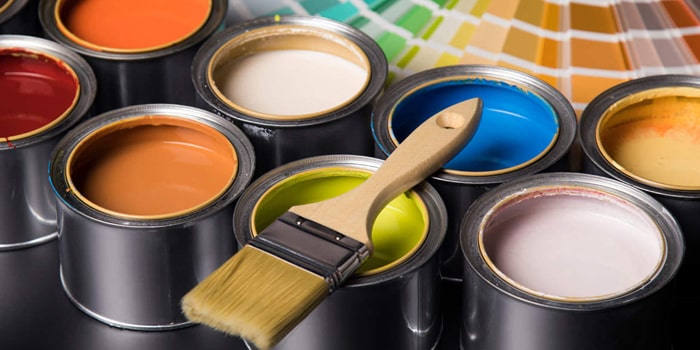
1. Surface Coatings – Paints & Printing Inks
Surface coating, any combination of film-forming materials with different types of pigments, solvents, and other additives, resulting in a thin film that is usable and often artistic when added to a surface and cured /dried.
2. Electrical Insulation – Wire Enamels
The electrical insulator is a material whose inner electrical charges do not continue to flow; under the influence of an electrical field, very little electrical current can pass through it. It compares with other products, semiconductors, and conductors that are harder to conduct electrical current.
Insulating Impregnating and Finishing Varnishes: Finishing Varnishes are one/two-element products that are designed specifically to protect wire wind components. Their outstanding resistance to moisture and chemicals ensures the best properties and maximum longevity across the entire time of operation.
Potting Compounds: Potting is a method whereby a complete electronic assembly is filled with a solid or gel material for shock and vibration resistance and for the absence of moisture and corrosive agents. The array of potting substances and encapsulants for each and every application involves epoxy, polyurethane and silicone chemistry. Also read some of the polyurethane resin uses
Printed Circuit Boards: A printed circuit motherboard chipset and binds electronic parts or electrical components by means of conductive tracks, pads and other features etched from one or more layers of copper laminated on and/or between the layer of sheets with a non-conductive substrate.
3. Foundry
Medical & Medicinal Applications
- Polymer for controlled released drugs
- Dental application
4. Packaging
The resins used in packaging are the following:
- High-Density Polyethylene (HDPE)
- Polystyrene
- Polyvinyl Chloride (PVC, Vinyl)
- Low-Density Polyethylene (LDPE)
- Polyethylene Terephthalate (PET, PETE)
- Polypropylene (PP)
5. Adhesives
In the formulation of adhesive systems, there are two basically epoxy acrylate resins. One is a vinyl ester resin that is similar to a DGEBA epoxy resin in two adhesive formulations. The other is a special resin form which is used in processes of radiation cure. Also read about the cosmetics raw materials.
6. Industrial & Decorative Laminates
- Standard UF resins
- Ethylene-vinyl acetates (EVAs)
- CARB II and EPA TSCA Title VI compliant resins
- Melamine Urea Formaldehyde (MUF) resins including Type 1 high moisture-resistant systems
- Liquid meter-mix systems
- PVA emulsions
- Caseins
7. Structural Composites
8. Ion exchange resins – Water purification & Water treatment chemicals
Beads of resin used for the water treatment for ion exchange. Ion exchange is really a water treatment system widely used for water softening or demineralization, but it is also used in procedures such as dealkalization, deionization, and disinfection to extract certain contaminants from the water.
The most widely used water treatment chemicals are:
- Algicide
- Chlorine dioxide
- Chlorine
- Muriatic acid
- Soda ash or Sodium bicarbonate.
Surface Coating
Paints & Printing inks – are dispersion of pigments, extenders in resins
Main objectives of surface coatings are:
- Protect
- Decorate
| Components | Purpose |
|
Optical & Mechanical
properties, durability & resistance to various environments |
|
Colour, Durability and
resistance to various environments |
|
Adjustments of optical
properties |
|
Solubilisation of resin and
application aid |
Types of Surface Coatings
We have surface Coatings for the following
- Solvent based: These are made up of liquefying agents which is evaporated by chemical reaction with oxygen. A major advantage is that they are less vulnerable to environmental conditions like humidity and temperature during curing phase
- Water based: In this type water act as a carrier for transporting the resins and other additives to the element which is to be treated. They, are more commonly used because of the inherent property of environmental sustainability as it dilutes and reduce the emission of solvents to nearly zero
- Solvent free: It is a type of coating where the solvent content is less than 5%, it is quite environment friendly and used in many industries to reduce pollution and corrosion and also reduced health risk and safety requirements.
- Powder: They represent over 15% of the total industrial market and used in a variant of products. They produce a high quality, durable finish thereby maximizing production with better efficiency and a relatively simple environmental compliance. Available in different colors and textures and modified technological advancements resulted in greater performance properties. They are also durable which makes them a popular choice
Application Technologies – Paints
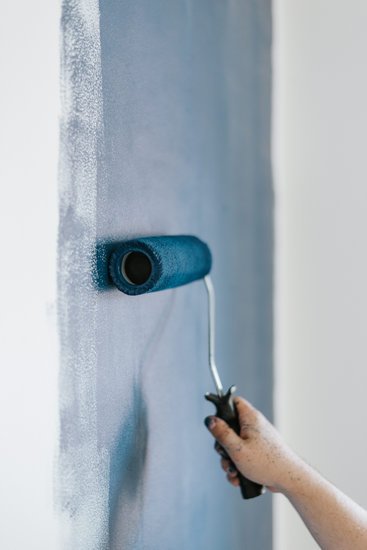
1. Brushing:
Under infinite variable circumstances and situations, brushing is the oldest and flexible type of operation. Painting large, complex objects are still the best method. Brushing enables us to penetrate the paint and reduce waste. It’s used primarily for decorative as well as maintenance purposes.
2. Dipping:
Dip coating relates to a substratum being immersed in a tank containing coating material, eliminating the piece from those in the tank and enabling it to drain. It is a popular method with the spin coating procedure to create thin film-coated components.
3. Air Assisted Spraying:
Hydraulic pressure allows air-assisted airless spray atomization so that it atomizes the pattern core. The pattern size and fluid flow speed are calculated by a fluid tip. Air fills the pattern, and the pattern is completed by an aircap, eliminating tails.
4. Electrostatic Spraying:
The application of electrostatic painting uses positive and negative charges to apply paint to avoid overspray and to ensure the application. It works by creating between the object and the paint an electrostatic field.
5. Airless Spraying:
The airless sprayer operates by squeezing paint through a tiny hole in the spray gun tip at a very high pressure, up to 3,000 psi. The tip is designed to disperse the paint uniformly into a pattern of tiny droplets in the shape of a fan.
6. Roller Coating:
Roller coating uses the coil coating principle but is intended to cover individual flat parts, such as round disks, which are then formed into the frying pans.
7. Curtain Coating:
Curtain coating is a process creating an uninterrupted fluid curtain that falls on a substrate. The surface is passed through the curtain at a controlled speed on a conveyor belt or calendar rolls to ensure even coverage of the die.
8. Anodic Deposition:
There will be two types of anodic and cathodic EPD systems. On the positively charged electrode or anode, negatively charged material is deposited in the anodic process. Positively charged material on the negatively charged electrode, or cathode, is deposited in the cathodic process.
9. Cathodic Deposition:
Cathodic electrodeposition is a high-quality, inexpensive coating for all submersible pieces of steel, also known as cathodic dip coating or cataphoretic painting.
Application Technologies – Printing Inks
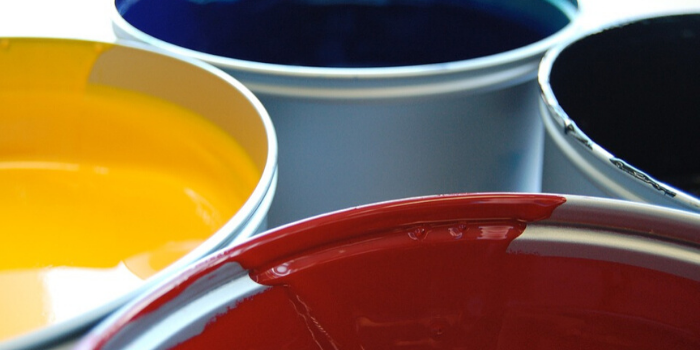
- Letter Press
- Offset/Web offset:
– Screen
– Flexo
– Gravure
Curing Technologies
- Ambient Temperature drying/air drying
- Elevated Temperature drying/curing
- Infrared drying
- Radiation Curing
Steps/Stages during curing
- Evaporation of solvents/water
- Reaction with atmospheric oxygen/humidity
- Reaction at ambient or elevated temperature
- Reaction induced by radiation
Synthetic Resins
- Saturated Polyesters
- Unsaturated Polyesters
- Alkyds
- Epoxies
- Acrylics
- Vinyls
- Polyacetals
- Polyurathanes
- Amino resins
- Phenolic resins
- Rosin modified resin
- Maleic resins
- Ketonic Resins
- Isocynate adducts
- Polyamides
- Silicones
- Cellulose acetate Butyrate
- Nitrocellulose
- Hydroxy ethyl cellulose
- Carboxy Methyl Cellulose
- Chlorinated poly propylene
Forms of Resins
- Solid
- Liquid
- 100% Liquid
- Solution in Solvent
- Emulsion
- Dispersion
Physical Parameters of Resin
- Appearance – Solid/Liquid
- Clarity – Whether clear / turbid / hazy / free of foreign particles % Solids
- Viscosity at specific temperature
- Dilution viscosity
- Solvent Tolerance
- Specific Gravity
- Softening / melting point
- Compatibility with co-resin/other resin
- Pot life (in case of two pack coatings)
- Gel Time
Chemical Parameters
- Acid Value
- Hydroxyl value
- Amine value
- Epoxy Value
- Isocyanate content
- Formaldehyde content
- Methylol Content
Curing or drying Parameters
- Ambient temperature Drying using driers (Metalic Soaps)
- Elevated Temperature drying using driers or crosslinker using specific ratios
Dry Film properties
- Appearance
- Clarity of the film
- Scratch hardness
- Pencil hardness
- Impact resistance
- Flexibility
- Gloss
- Resistance to water
Saturated Polyesters
Saturated polyester resin is the reaction of polybasic acids and polyols and has outstanding strength and hardness in its characteristics. It is primarily used for non-stick pan,glue, PET coil, metallic baking paint like automotive paint, painting, Marker, Rolling steel.
- Raw materials
Aliphatic dibasic acids, Aromatic dibasic acids, THPA, HHPA, TMA, etc. Glycols
- Functional groups
Carboxyl, Hydroxyl, Ester
- Major End Uses
Auto OEM and refinishes, coil coatings, Powder coatings
Unsaturated Polyesters
Copolyesters are unsaturated polyesters — that is, polyesters prepared from a saturated dicarboxylic acid or its anhydride (usually phthalic anhydride) as well as an unsaturated dicarboxylic acid or anhydride (usually maleic anhydride).
- Raw materials
Aliphatic dibasic acids, Aromatic dibasic acids like Maleic anhydride, Fumeric acid, Glycols
- Functional groups
Carboxyl, Hydroxyl, Ester, unsaturation.
- Major End Uses
Wood finishes, Automobile putty
Alkyds
Alkyd resins are polyester thermoplastic resins made with polybasic acids or their anhydrides by heating polyhydric alcohols. These are used to produce protective coatings with strong weathering properties and due to their durability and low cost, these are important ingredients in many synthetic paints.
- Raw materials
Oils, Fatty acids, Aromatic dibasic acids, Unsaturated dibasic acids like Maleic anhydride, Fumeric acid
- Functional groups
Carboxyl, Hydroxyl, Ester, unsaturation.
- Major End Uses
Architectural coatings, Industrial Coatings (Ambient Temperature drier/Elevated temperature drying)
Epoxies
Epoxy resins are used for the manufacture of adhesives, coatings, paints, plastics, primers and sealers, floors and other items and materials used in building applications. Epoxies are plastics of thermoset formed by the reaction of two or more industrial chemical compounds.
- Raw materials
Bisphenol A & epichloro hydrin
- Functional groups
Ether, epoxy, Hydroxy
- Major End Uses
Industrial maintenance coating, Chemical Resistant Paints, Electrodeposition Paints, Powder coatings.
Acrylics (thermoplastic)
Solvent-based acrylic coating resin is the polymer that is formed by unsaturated bonds from the cross-linking reaction between acrylic and ester monomer. Acrylic resin is made up of types of thermoplastics and thermosetting. Acrylic paint is highly heat, water and chemical resistant.
- Raw materials
Soft & hard monomers
- Functional groups
Carbon Carbon bond
- Major End Uses
Coating on plane substrates such as ABS, HIPS, etc. (Cabinets, Mobile phones, etc). Touch up paints(aerosol coatings), Coat on concrete.
Acrylic (Thermosetting)
Acrylic resin includes types of thermoplastic and thermosetting. Acrylic paint is highly heat, water and chemical resistant. In addition, it can co-polymerize to meet the performance requirements of hardness and softness with other monomers.
Used primarily in cement painting based on oil, plastic paint, marine paint, automotive baking paint, appliances / metal baking paint, automotive refinishing, wood coating, etc.
- Raw materials
Soft & hard functional monomers
- Functional groups
Hydroxyl, carboxyl, Etherified N-methylol groups, etc.
- Major End Uses
Automotive Paints (top coats for metal & plastic components)
Polyamides (reactive)
A polyamide is a multi-unit macromolecule connected by amide bonds. Naturally and artificially, polyamides occur. Proteins, such as wool and silk, are sources of naturally occurring polyamides. Using step-growth polymerization or solid-phase synthesis, which yields materials such as nylons, aramids, and sodium poly(aspartate), polyamides can be made artificially. Because of their high durability and strength, synthetic polyamides are commonly used in textiles, automotive, carpets, kitchen utensils, and sportswear. The major consumer is the transportation manufacturing industry, accounting for 35% of polyamide (PA) consumption.
- Raw materials
Dimer fatty acid, monobasic fatty acid, triethylene tera amine, triethylene pentaamine, diethylene triamine
- Functional groups
Amide, amino
- Major End Uses
Harder for epoxy coating
Polyamides (Non-reactive)
Polyamide resins based on dimer acid (DAB) are either reactive or non-reactive. Of epoxy resins used in surface coatings and adhesives, reactive polyamides are mainly used as curing agents. Non-reactive DAB polyamides are commonly used in hot-melt adhesives as well as in printing inks.
- Raw materials
Dimer fatty acid, Monobasic fatty acid, Ethylene diamine
- Functional groups
Amide
- Major End Uses
Printing inks for polyphenic substrates
Pure phenolic resins (Resols)
The resin provided is treated using top grade chemicals. In varnishes, enamels and lacquers, this resin is widely used. In fact, at the most affordable prices, this Pure Phenolic Resin is made available to customers.
- Raw materials
Phenol formaldehyde, Alcohols, such as butanol, etc.
- Functional groups
Methylene bridge, Ether, methylol, etherified methylol
- Major End Uses
Curing agent for epoxies and silicon at elevated temperatures, Sp. varnishes
Rosin Modified Phenolic resins
Rosin Modified Phenolic Resin is a vacuum-treated glycerol (or penta erythrite) esterification product containing rosin, phenol (or bisphenol A) and formaldehyde polycondensate.
- Raw materials
Rosin Bis-phenol A, Para tertiary Butyl phenol, Paraformaldehyde Penta, glycerine
- Functional groups
Methylene bridge, ether, methylol, etherified methylol
- Major End Uses
Printing inks, Vehicles, Hammer tone binders
Rosin modified Maleic resins
Maleic resin is produced by esterification with the polyhydric alcohol from gum rosin and maleic anhydride. UMaleic resins are used to improve shine, hardness, drying rate, abrasion resistance and yellow resistance primarily for surface coatings and primers. In Toluene, Xylene, White Spirits, completely Soluble.
- Raw materials
Rosin, Maleic anhydride, Fumeric acid, penta, glycerine, etc.
- Functional groups
Ester, carboxyl, hydroxyl
- Major End Uses
Picture varnish, Flexo inks, hammer tone binder, nitro cellulose based paints.
Isocyanate adducts
In many industrial fields, polymers prepared by polyisocyanate reaction, hereinafter referred to as isocyanate adducts, are used. For example, polyurethanes, poly isocyanurates and polyureas are adducts of isocyanate
- Raw materials
TDI, HDI, IPDI, TMP
- Functional groups
Urethane, isocyanate
- Major End Uses
Crosslinker for alkyd, epoxy and acrylic polyol
Amino Resin
Amino resins are polymers that are thermosetting created by combining an aldehyde with an amino (NH2) group compound. Urea–formaldehyde (U / F) accounts for more than 80% of amino resins; most of the remainder are accounted for by melamine–formaldehyde. Certain aldehydes and other amino compounds are used for a very low extent
- Raw materials
Urea, Melamine, Paraformaldehyde, Butanol
- Functional groups
Ether, Methylol, etherfied methylol, imino
- Major End Uses
Crosslinker for alkyd, epoxy and acrylic polyol.
Ketonic resins
Ketone-aldehyde resins are condensation products of cyclohexanone and an aldehyde such as formaldehyde or isobutyraldehyde, also known as cyclohexanone or ketonic resins. … When mixed with these resins, gloss, hardness, adhesion, and heat and light resistance are often improved.
- Raw materials
Cyclohexanone, isophorone, formaldehyde
- Functional groups
Ether, Methylene, hydroxyl
- Major End Uses
Picture varnishes & Flexo inks
Silicones
Silicone resins are a form of silicone material formed by branched, cage-like oligosiloxane with a general RnSiXmOy formula, where R is a non-reactive substituent, usually Methyl (Me) or Phenyl (Ph), and X is a functional group of Hydrogen (H), Hydroxyl (OH), Chlorine (Cl) or Alkoxy (OR).
- Raw materials
Silane diols, silane triols
- Functional groups
Silicon oxygen bond, ether, hydroxyl
- Major End Uses
Heat resistant coatings
Vinyls
Vinyl ester resin, or often simply vinyl ester, is a resin formed with acrylic or methacrylic acids by esterification of an epoxy resin.
- Raw materials
Vinyl chloride, vinyl acetate, maleic anhydride
- Functional groups
carbon carbon bond, carboxyl, hydroxyl
- Major End Uses
Modifying resin
Polyacetal resins
Polyacetal resins, also classified as acetal or polyoxymethylene (POM) resins, are essential engineering resins with outstanding wear resistance and extraordinary chemical, thermal, electrical and mechanical properties.
- Raw materials
Polyvinyl alcohol, formaldehyde, butyraldehyde
- Functional groups
carbon-carbon bond, ether, hydroxyl
- Major End Uses
Etch primer, flex inks
At Bansal Trading Company the chemical suppliers in India, everything we do is based on experience, power and creativity. They are also one of the pigment manufacturers in India. The best chemical supplier and 100% trust builded products are been served for years. You can contact us for more details & follow ups!
BTC_WEB_ADMIN



